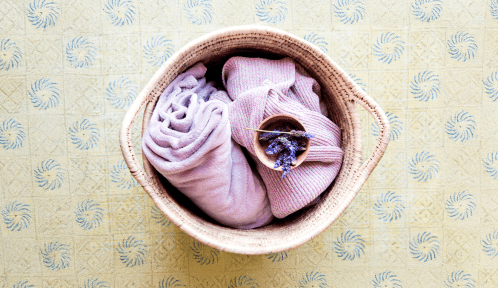Our editors independently select these products. Making a purchase through our links may earn Well+Good a commission
There are only a few things that never go out of style. Sourdough is arguably one of them. Although the technique is hardly new—it dates as far back as 3700 BC—we’ve seen a rise (pun intended) in sourdough making over the last few years. But why? Perhaps it has to do with the powerful gut health potential of this humble ingredient.
Experts in This Article
registered dietitian and author of Smoothies &
Sourdough, a naturally-leavened dough made with fermented flour and water (aka “starter”), is often considered a boon for gut health and a pillar for boosting longevity, due to its unique fermentation process. This is likely why you’ve seen the fermented dough popping up in recipes that go beyond a homemade loaf of sourdough bread lately: think sourdough pancakes, waffles, muffins, you name it.
Now, sourdough is stepping into the consumer packaged goods (CPGs) game in the form of sourdough pasta for the very first time, thanks to Bionaturae, an organic sourdough pasta company. I had a chance to try the new collection, and let me be the first to say: Run, don’t walk. If sourdough has been on your mind lately, this product should certainly be on your radar.
Ahead, I’ll share my honest thoughts on the buzzy, new sourdough pasta product. Plus, I spoke with a registered dietitian who cleared the air about just how good sourdough really is in terms of health benefits.
What are the gut health benefits of sourdough?
By now it’s no secret that sourdough is a golden child of gut health. Why? It’s fermented, folks, and our guts thrive on fermented foods. Will Bulsiewicz, MD, a gastroenterologist and New York Times bestselling author of The Fiber Fueled Cookbook, even shared in a recent TikTok video that sourdough is one of his go-tos for a healthier microbiome. “My favorite bread for digestion and gut health is sourdough bread. Sourdough is incredible because these microbes [yeasts and lactic acid bacteria] are transforming the flour. They’re slowly fermenting it, releasing vitamins, additional nutrients, and new forms of fiber, believe it or not,” Dr. Bulsiewicz explains.
Frances Largeman-Roth, RDN, a nutrition expert and author of Everyday Snack Tray, also agrees sourdough is a powerful gut health influencer. “Due to the breakdown of phytate, a natural food inhibitor that ‘locks up’ nutrients, minerals including zinc, calcium, and magnesium may be more bioavailable in sourdough,” Largeman-Roth explains.

Bionaturae Organic Fusilli Sourdough Pasta — $5.00
I tried sourdough pasta for the first time
If sourdough is on the ingredient list, you better believe I’ll be the first to try it. Needless to say, I was beyond excited to get my hands on Bionaturae’s line of organic sourdough pasta.
The hot new sourdough collection includes three unique pasta shapes: spaghetti, fusilli, and penne. And the ingredient list is just as simple: organic durum wheat semolina and organic sourdough starter (organic emmer flour and filtered water), that’s it. In terms of nutrition, you can expect to find about eight grams of protein, three grams of fiber, 1.4 milligrams of iron, 20 milligrams of calcium, and 160 milligrams of potassium per serving of the fusilli pasta, which isn’t too far off from what you may find from a standard box of fusilli pasta (minus the sourdough, obvi). For context, De Cecco’s Semolina Pasta contains eight grams of protein, two grams of fiber, 1.7 milligrams of iron, 15 milligrams of calcium, and 139 milligrams of potassium per serving.
To test the product, I opted for no sauce, no butter, no oil; I wanted to ensure I could enjoy the sourdough pasta in its simplest form. I cooked the fusilli pasta per the instructions on the packaging: “Cook pasta in four quarts of salted boiling water for eight to nine minutes. Stir frequently.” I found that at eight minutes the pasta was perfectly al dente.
Upon first bite, I was surprised to find the pasta has a similar flavor to a typical loaf of sourdough. It was slightly tangy and just a bit acidic. Frankly, the flavor was no different than most sourdough bread I’ve tried in the past, which I really liked. Of course, there were some differences, too. (It’s pasta, not bread!)
When testing a new pasta product, texture is my number one focus. The good news? This pasta cooks similar to most traditionally-made pasta products, in that it maintains its firmness well and has an al dente texture when cooked. After a few minutes of sitting out, however, the pasta became slightly chewier, but it wasn’t off-putting whatsoever.
Although I didn’t add anything to the pasta this time, I can report that it wasn’t only for the sake of my experimentation. In fact, I enjoyed a big ol’ bowl of this sourdough pasta without any garnishes because the sourdough flavor is something I often long for, and it’s definitely a prominent figure in this product.
TL; DR?
Given the added gut health perks sourdough pasta offers and its delicious flavor and texture, there’s no doubt I’ll swap the traditional boxed pasta I usually buy for this new product from here on out. Plus, it tastes just as good, if not better, thanks to the subtle tangy flavor from the fermented sourdough starter, which I love. In the future, I’ll experiment with adding sauces into the mix, like a jar of Carbone’s Spicy Vodka sauce (my favorite). Fortunately, I have no doubt I’ll enjoy it just as much as I did when it was plain. I’m officially sold on sourdough pasta, folks. Coming from a pasta snob, I hope that means something to you, too.
Lau, Siew Wen et al. “Sourdough Microbiome Comparison and Benefits.” Microorganisms vol. 9,7 1355. 23 Jun. 2021, doi:10.3390/microorganisms9071355
↩︎
Sign up for the Well+Good SHOP Newsletter
Get exclusive deals on wellness, beauty, fitness, and food products that have been hand-picked by our editors.
Got it, you've been added to our email list.











